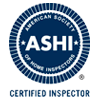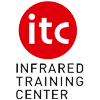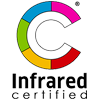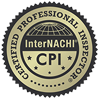Mold
MOULD
Water is the single biggest enemy of homes, whether it’s from rain or melting snow, groundwater problems, poor grading, leaking plumbing or heating systems, dishwashers or clothes washing machines. Water can cause significant issues including the growth of mould. Mould spores are all around us, but if there is no moisture, mould does not grow. However, moisture creates an environment where mould can thrive.
WHAT IS MOULD?
-A common term for a large family of fungi with a cottony or woolly appearance
-A naturally occurring organism that grows in buildings where there is moisture, air, a food source, andtemperatures between 40°F and 140°F
-When these conditions are not met, mould is dormant, but not eliminated
-Mould spreads by dispersing spores through the air and by growth on or within building materials
IS IT DANGEROUS?
-When moulds grow, they make lots of chemicals – allergens and toxins- however most mould is notharmful
-Moulds can be just a cosmetic nuisance
-A few moulds can also be dangerous, acting as allergenics to some individuals, while some are toxicto ALL and can be especially harmful to young people, old people, and people with respiratoryproblems or compromised immune systems
-Individuals may react to mould spores alone, meaning visible growth is not necessary to cause issuesfor sensitive individuals
HOW TO IDENTIFY MOULD
-Mould is difficult to identify since many different kinds of moulds look the same, meaning a black mouldcould be a cosmetic concern or a dangerous, toxic species
-Since experts recommend that all moulds be removed there’s no need to try to identify the mould type
-Home test kits are also not reliable
- Spores collected and “grown” in these methods could be dead, fail to grow on the culturemedium, and still be toxic if inhaled
-Instead, have an expert survey your home, or send your own sample to a testing laboratory whereaerobiologists or mycologists will examine the sample’s contents
MOULD REMOVAL
- Level I: For small areas of mould <10 sq/ft
- Most moulds on hard surfaces can be removed with soap and water, using gloves, glasses and a mask (Clean, rinse, DRY)
- Remove and discard carpet, textured ceilings with mould and surfaces that remain stained
- Wash fabrics
- Infants, individuals who are allergic, asthmatic, elderly or immune-impaired should not disturb mould and should not be present where mould remediation is performed
- Level II & III: For large areas of mould 10 – 100sq/ ft and >100 sq/ft
- Both require enclosures and qualified individuals to do the removal (include use of negative air machines)
- Professional assessment
- Remediation companies (use many different techniques)
MOULD PREVENTION
-Mould is not always visible, therefore prevention is more effective than removal
-Mould needs 4 things to grow:
- Spores, food, appropriate temperature and wateroSpores, food from drywall/cellulose and temperatures >40°F and <140°F are ever-presentwithin homes, therefore prevention must focus on moisture
-Remove moisture and address possible moisture sources
- Correct leaks into or through roofs, walls, doors, windows, basements, plumbing or heatingsystems
- Be aware of condensation from cooking, bathing, etc.
- Air conditioning systems, humidifiers, dehumidifiers and sump pits are other areas wheremoulds often grow due to moisture
Source: Carson Dunlop









